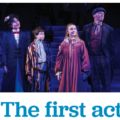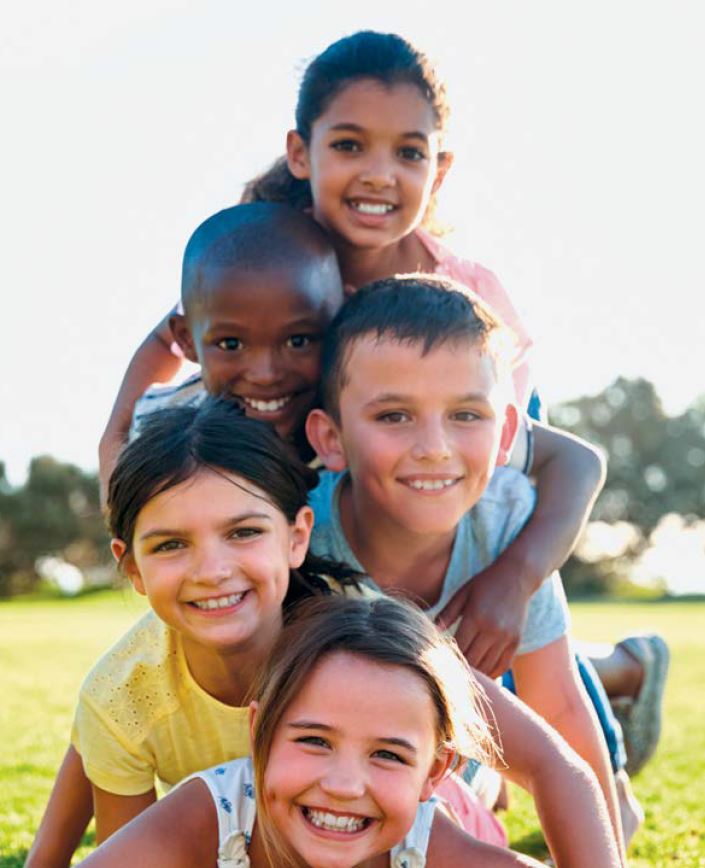You have one minute to engage your kids: It’s a Monday, you have to get the kids to school, and you’re only on your first cup of coffee.
What can you do that will help them think better and not annoy you?
Do an art activity.
What, you may ask, is an “art activity?”
It’s something that exposes kids to art.
Why should you do it? According to the National Endowment for the Arts, kids with more art experiences have higher GPAs than kids who lacked those experiences.
How do you start?
Pour that second cup of coffee, set the timer for one minute and do one of the following:
Game 1: Spoons
Ask your kid “How many things can be done with spoons?”
Your kids might say, “I don’t know,” or “You can eat with spoons, dig with spoons. Uhhhhhh.”
Then your kids may fall silent. This is where you say “Keep going.”
Your kids may come up with one more answer, something like, “You can fling a spoon.”
The minute will pass.
What’s the answer?
An unknown number of things can be done with spoons. Think outside of the box, or in this case, the silverware drawer.
Thinking beyond what’s obvious frees up a child’s imagination. And imagination leads to solutions.
Let’s get back to the spoons. If you weld spoons together, you could build a wall, and then you could make a house of spoons. (No, that’s not cheating; I never said, “a spoon,” or that the spoons had to remain in their original form.)
The question leads your child, and you, to think strategically to solve a puzzle. This method of thinking creatively frees up your mind to design, imagine and build ideas that don’t exist.
That’s how art starts. You’ve just engaged in strategic thinking.
Open the cupboard and let your kid look inside it for eight seconds. (This isn’t the time to obsess over the fact that there’s high fructose corn syrup in half of the breakfast cereals.)
Close the cupboard.
Ask your kid, “How many colors can be made from the colors on the boxes inside the cupboard?”
You’ll probably get this back: “I don’t know.”
Who thinks about cereal boxes and art? Ask your kid to open the cupboard and see if they can spot red, yellow and blue inside.
All colors can be made from the three primary colors. Play a color-addition game: What’s red plus yellow? Orange. Was there a yellow box on your shelf? A blue one? Sure there was; everyone has that blue box of pasta on the second shelf, so now you have yellow plus blue. You get the picture.
Now you’ve covered visual recall.
Wow, look at you, covering strategic thinking, problem solving and visual recall all before your third cup of coffee!
Your kid used art, or thinking about art, to fire up those synapses before class. Thinking about art can carry over into other areas of study, such as math, language and science.
Ultimately art allows individuals to create something from nothing by strategically analyzing a problem and solving it. If you have five minutes, tour the world’s greatest museums online. This may lead to conversations about the historical context that art was created in, or the purpose of art.
If you ask your kid what they think about a painting they’re looking at they may say, “I don’t know.”
That’s OK, school doesn’t train our kids to think of possibilities, it teaches kids to have answers.
Get your kids thinking and they’ll come up solutions to all kinds of problems.
Grab a pencil and a piece of paper. Ask your kid to draw a bicycle with circles and lines.
Did you set the timer for one minute? If your coffee’s kicked in, you can try it too.
What does this game do for your kids?
It makes them think about design principles of how shapes fit together for practical use. If you want a hint, a basic bike can be drawn using five circles and 11 lines.
Wait a minute, how is this art, you ask?
It’s art because it involves organizing shapes and lines and creating a design.
You’ve just covered design, which fits under problem solving.
Now, it’s time for school!
Artist Ruthie Briggs-Greenberg is finishing her masters in painting from the Academy of Art University in San Francisco. She lives in Los Angeles with her husband, two children. Felicity the Dragon is Briggs-Greenberg’s debut book offering. Her second children’s book, Sea of Echoes, written by J. Mac Reed, will be out in November.


















